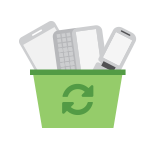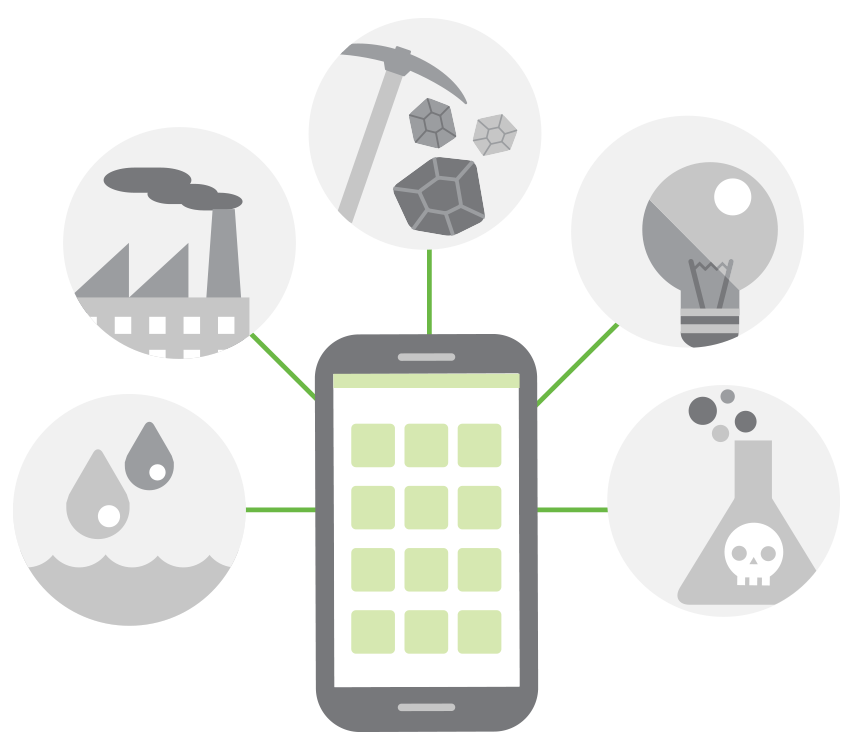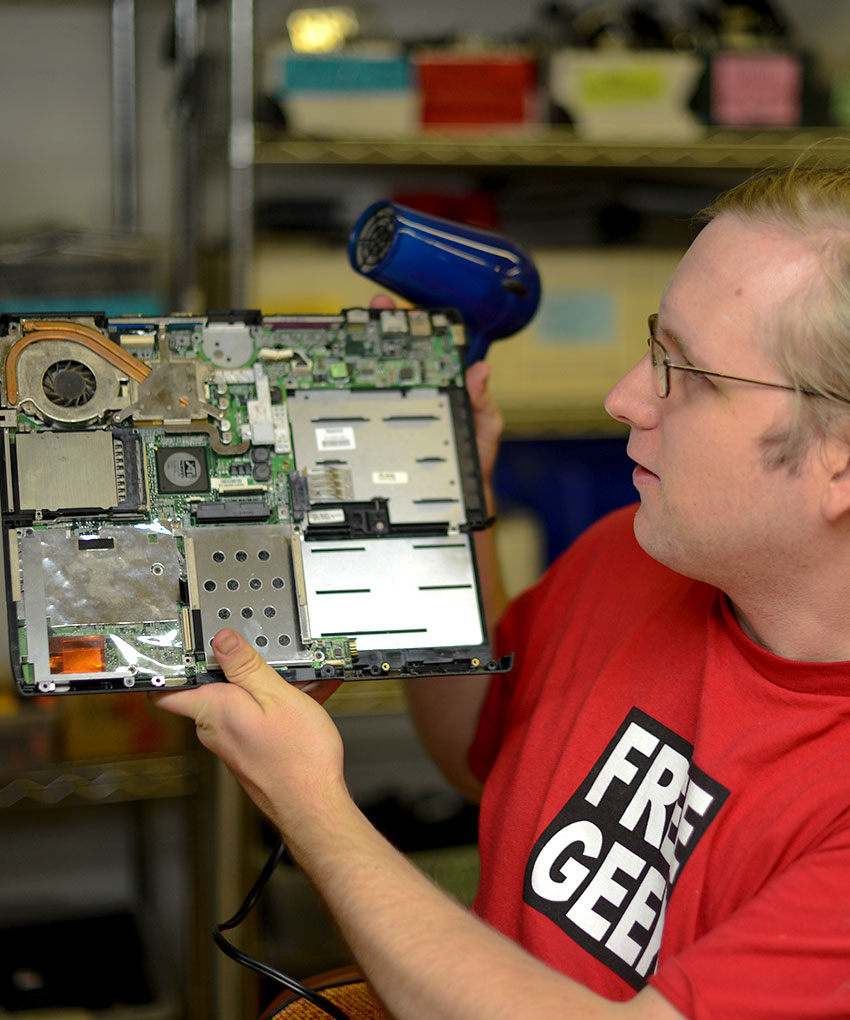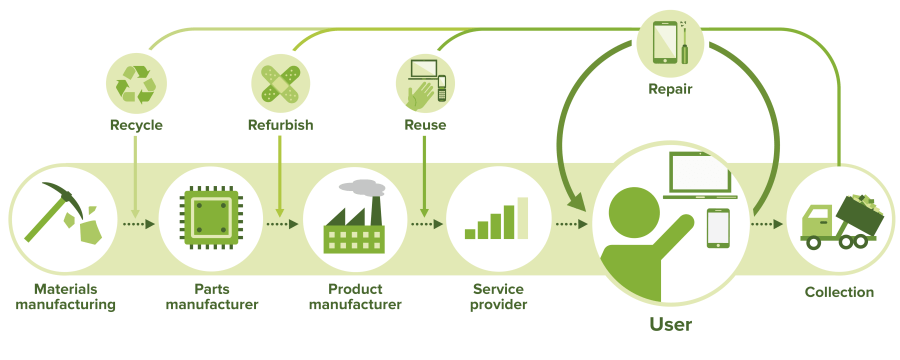Recycling Isn’t the Answer; It’s the Last Resort
Millions of gadgets reach the end of their life every year. Recycling them isn’t nearly as effective as you’d think.

57% lost
The majority of recycled materials are lost in the process. Of the 13.8 billion kg of e-waste collected each year, we lose 7.8 billion kg of material (including 1 billion kg of metal).

17 Rare Earths
Rare earth elements are present in every single electronic device you own. Recycling meets just 1% of the demand for them.

1,150 Lightbulbs
Your smartphone consumes enough energy during manufacturing to power 1,150 60-watt light bulbs for an hour—energy lost when the phone is shredded.

0 Smartphones
That’s the number of smartphones that have been made from 100% recycled materials. We cannot make a new phone from an old one.
Recycling electronics is a waste of energy.
Recycling is better than throwing stuff away. But it’s not a solution—and it’s not nearly as “green” as electronics manufacturers want you to believe.

When you buy a smartphone or a tablet, it comes with something you can’t see or feel: embodied energy.
It takes (literally) tons of raw materials, hundreds of person-hours, and enormous amounts of energy to manufacture the electronics that most of us use. 85% of the emissions impact of a smartphone comes from production. Greenhouse gas emissions from electronic devices and e-waste increased by 53% between 2014 and 2020—and continue to grow.
Just how much energy does it take to make a computer? About as much as burning 365 pounds of coal.
Our electronics might be smart, but they are also dirty.
Here’s what goes into your stuff before you even buy it:

Recycling doesn’t close the loop.
Consumer electronics are incredibly complex. The average smartphone has more than 300 components, most a cocktail of different materials.
A typical smartphone is about 50% metals—many of which are alloyed together.
Some metals, like critical rare earth elements, are too difficult or too expensive to separate out for recycling. Only a small handful of metals can be recovered through smelting.
What's in your cell phone?
Of the over 30 metals in your cell phone, half of those metals have functional recycling rates under 50%—meaning the properties that made the metal desirable in the first place cannot be retained, and the metal cannot be reused.


There’s a better way...
The best shot we have at reducing the environmental impact of our electronics is to keep them around for as long as possible.
Repair is the first line of defense against waste. It extends the life of electronics: users can replace broken components, put in a better battery, or upgrade to higher-capacity RAM whenever they want. That means less stuff in landfills and less things in a recycler’s shredder.
Even better, when stuff is repaired, it holds on to all the energy and all the materials it used up during manufacturing. Nothing is wasted. Nothing is lost.
Repair is better than recycling.
And we're not the only ones who think so. Leading think tanks, like the Ellen MacArthur Foundation, say the best way to support both the economy and the environment is through a Circular Economy, where resources are designed for widespread reuse.

Reduce, Reuse, Repair, then Recycle.
It’s better for the planet, the pocket book, and the bottom line.
Learn More
Green standards are in need of repair—how manufacturers are fighting environmental initiatives.
Cell phone reuse vs recycling (hint: reuse is better).
The monster footprint of digital technology.
California recyclers say the passage of Right to Repair is a "game changer."
Take Action
If you’re not going to use your device anymore, pass it on to a family member or friend who needs it.
Instead of recycling, sell your stuff on Craigslist or Swappa. Or sell your old phone to folks like Backmarket.
Encourage your company to donate old hardware to schools and reuse programs. Make sure they go on to a second life.


